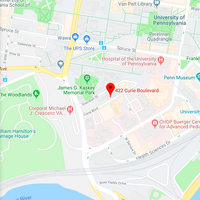Recent Publications
Nature Communications: Longitudinal HIV sequencing reveals reservoir expression leading to decay which is obscured by clonal expansion
Summary:
While antiretroviral therapy (ART) reduces viral load to undetectable levels, a “reservoir” of treatment-resistant HIV infected cells persists, leading to recurrent viremia if an individual stops therapy even after years of treatment. Current belief is that the HIV reservoir may persist because it is invisible. If HIV is integrated in the human chromosome and it is never expressed, the integration event could have a minimal effect on cell turnover. Our study suggests on the contrary that the reservoir is highly dynamic with contraction and expansion forces exerted on the reservoir simultaneously consistent with significant HIV reservoir expression. Paradoxically reservoir expression may play a role in both its contraction by inducing cell death and its expansion through aberrant splicing to human genes that enhance cell division. It remains unclear why sometimes death of HIV infected cells predominates while at other times the HIV infected cell divides.
Link to Publication: https://www.nature.com/articles/s41467-019-08431-7
Naive infection predicts reservoir diversity and is a formidable hurdle to HIV eradication
Summary:
Historically, naive cells have been considered inconsequential to HIV persistence. Here, we compared the contributions of naive and memory cells to the reservoirs of individuals with a spectrum of reservoir sizes and variable immunological control. We performed proviral sequencing of approximately 6000 proviruses from cellular subsets of 5 elite controllers (ECs) off antiretroviral therapy (ART) and 5 chronic progressors (CPs) on ART. The levels of naive infection were barely detectable in ECs and approximately 300-fold lower compared with those in CPs. Moreover, the ratio of infected naive to memory cells was significantly lower in ECs. Overall, the naive infection level increased as reservoir size increased, such that naive cells were a major contributor to the intact reservoir of CPs, whose reservoirs were generally very diverse. In contrast, the reservoirs of ECs were dominated by proviral clones. Critically, the fraction of proviral clones increased with cell differentiation, with naive infection predicting reservoir diversity. Longitudinal sequencing revealed that the reservoir of ECs was less dynamic compared with that of CPs. Naive cells play a critical role in HIV persistence. Their infection level predicts reservoir size and diversity. Moreover, the diminishing diversity of the reservoir as cellular subsets mature suggests that naive T cells repopulate the memory compartment and that direct infection of naive T cells occurs in vivo
Link to Publication: https://insight.jci.org/articles/view/150794
Persistence of an intact HIV reservoir in phenotypically naive T cells
Summary:
Despite the efficacy of antiretroviral therapy (ART), HIV persists in a latent form and remains a hurdle to eradication. CD4+ T lymphocytes harbor the majority of the HIV reservoir, but the role of individual subsets remains unclear. CD4+ T cells were sorted into central, transitional, effector memory, and naive T cells. We measured HIV DNA and performed proviral sequencing of more than 1900 proviruses in 2 subjects at 2 and 9 years after ART initiation to estimate the contribution of each subset to the reservoir. Although our study was limited to 2 subjects, we obtained comparable findings with publicly available sequences. While the HIV integration levels were lower in naive compared with memory T cells, naive cells were a major contributor to the intact proviral reservoir. Notably, proviral sequences isolated from naive cells appeared to be unique, while those retrieved from effector memory cells were mainly clonal. The number of clones increased as cells differentiated from a naive to an effector memory phenotype, suggesting naive cells repopulate the effector memory reservoir as previously shown for central memory cells. Naive T cells contribute substantially to the intact HIV reservoir and represent a significant hurdle for HIV eradication.
Link to Publication: https://insight.jci.org/articles/view/133157

